Illustrious missionary monks in Sri Lanka
Life in the GardenAn extraction from the “The Sylvestro-Benedictine Prelates and the Sri Lankan Church”
By Fr. Bede Barcatta OSB
INTRODUCTION: THEY CAME TO BRING CHRIST
The Catholic Church in Sri Lanka had its beginnings in the 16th century with the Portuguese. Christianity had already made a brief appearance in the island at the end of the century; however, from the second half of the 6th century onwards for nearly a thousand years no documentation is found about the presence of Christians in the island. In 1505 the king of Kotte welcomed the Portuguese, who in 1518 were allowed to establish a trading settlement and slowly took over control of the island’s cinnamon trade. A small factory was constructed on a hill, and close by a tiny chapel was dedicated to Saint Lawrence, the patron Saint of their captain Lourenco de Almeida. “The history of the Catholic Church in Ceylon may be considered as dating the erection of this Chapel”, R. Boudens commented.
In 1543 a group of Franciscans arrived and worked with such zeal that soon a few thousands of people accepted Christ. With the arrival of new helpers the Franciscans spread themselves along the western coast of the island. Missionaries from other religious orders soon joined them: the Jesuits arrived in April 1602, followed by the Dominicans in 1605 and the Augustinians in 1606. By the time the Dutch supplanted the Portuguese Christianity was well rooted in Colombo and other towns. By the end of the Portuguese period there were more than 120 missionaries scattered throughout the island, especially on the coastal regions and the population in some parts of the country, in Galle, Negombo and Jaffna, was predominantly Christian.
The Dutch began to expand their influence into the Indian Ocean at the beginning of the 17th century. In 1640 the Dutch occupied Negombo and Galle and later Colombo and Jaffna. In 1658 the Portuguese rule in Sri Lanka came to an end and the Dutch became the sole foreign power in the island and remained till 1796, when they were replaced by the British.
The Dutch were members of the Reformed Church and showed great hostility towards the Catholics. Their attitudes were motivated as much by political considerations as by religious convictions. They strove to eradicate not just the Portuguese territorial domination, but also used all available means to uproot the Catholic religion. As a matter of fact, a cruel persecution against the Catholics lasted with more or less bitterness for the whole period of Dutch Rule. Already in 1640, the Dutch, after the conquest of Galle, confiscated the Jesuit residence and the four priests were taken captives to Batavia. When Colombo in 1656 and Jaffna in 1658 fell into the hands of the Dutch, their first concern was to banish all Catholic missionaries to Goa. The young Christian communities were deprived of the spiritual assistance for nearly thirty years, until Blessed Joseph Vaz, called the “Apostle of Sri Lanka”, in 1687 landed in the island under the disguise of a beggar. Slowly he came in contact with local Catholic communities and began his apostolate first in Jaffna then in Kandy. A few members of his oratory in Goa joined him. At the time of Bl. Vaz’ death Oratorains from Goa were working in Sri Lanka. He died in Kandy on 16 January 1711. Fr. Joseph Vaz soon after his death was acclaimed a Saint and he was proclaimed officially a “Blessed” by the Church on 21 January 1995.
The Oratorians from Goa continued their apostolate until the second half of the XIX centuries. When their Congregation in Goa was suppressed in 1835 by the local government, they were compelled to give up slowly the field of their apostolate in Sri Lanka. The last Oratorian, Matteo Gaetano, who had been the Vicar General of Mgrs. Bravi and Sillani, died on 22 January 1874.
The Oratorians deprived of their only source for personnel appealed Rome. The first missionary sent by Propaganda in 1842 was the Italian Oratorian Orazio Bettacchini. In the island there was already a French missionary, Alexander Dumas; but he was forced to leave the island of soon after. Another French missionary arrived a little later, Andrew Reinaud, who at the request of Bettacchini was allowed to remain in Kandy.
The first Sylvestro-Benedictine monk, Joseph Bravi, arrived in Colombo on 14 August 1845. He was followed by members of his Congregation and in 1855 the Vicariate of Colombo came under the administration of the Sylvestro-Benedictine monks. In 1858 some local youth were sent to Rome for their formation to the priesthood as members of the Sylvestrine Congregation: others followed. However, the need of a local monastery for the training of native youth became an accepted fact by the Sylvestrine monks working in the island, so the monastery of St. Anthony in Kandy was opened and blessed by Mgr. Sillani at the end of December 1878. On 1 January 1875, some native youth received the monastic habit from the same prelate. St. Anthony’s monastery in Kandy remained the house of formation for the Lankan monks for half a century, when in 1927 a property was purchased at Ampitiya, where the present monastery of St. Sylvester or Montefano stands and continues to be the house of formation of the young Sylvestrine monks.
Who are the Sylvestro-Benedictine monks, or the ‘Benedictines’? They are a group of a bigger family, the Benedictine Family, which between male and female members still are more than 20,000 scattered all over the world. The Benedictine family had its beginning with St. Benedict of Nurcia (480-547), who gathered around himself disciples, to whom he gave a Rule and were governed by an Abbot. St. Benedict’s disciples spread all over Europe bringing with them the Gospel of Christ and human civilization. For several centuries the Benedictine monks were the leaders of many local communities. The Sylvestrine Congregation is a shoot from this old tree. It had its beginning with St. Sylvester in the XII century. The Sylvestrine monks followed the Rule and customs of the Benedictine Family. Montefano, Ampitiya, is a true Benedictine monastery.
Today the Sylvestro-Benedictine monks are the oldest religious order still flourishing in Sri Lanka. Today the Sylvestro-Benedictine monks invite all Sri Lankan Catholics to join them in celebrating 150 years of their presence in the island with thankfulness to God for His constant protection during these many years.
Mgr. Joseph Maria Bravi (1813-1860)
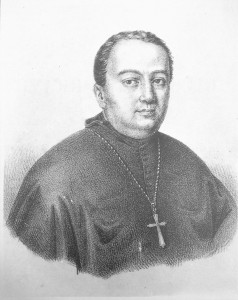

Joseph Bravi was born in the small town of Monte Santo (archdiocese of Fermo, Italy), on the 6th of December 1813. He was the second of five surviving children, three boys and two girls. His older brother, Francis, joined the Oratory of Philip Neri and two of his uncles were religious. One of his uncles, Dom Hugo Bravi, became the Abbot General of the Sylvestrine congregation. Bravi was clothed with the monastic habit in St. Benedict’s church at Fabriano, on the 26th of November 1830. He was ordained a priest on the 19th of June 1836. Mgr. Bravi had a great affection for the “beloved sovereign”, the Pope in Rome. After delivering lectures in Dogmatic and Moral theology at the monastery of St. Sylvester at Osimo, on the advice of St. Vincent Pallotti, in September 1844, was assigned by the congregation of propaganda Fide to the Sri Lankan missions. The opposition of the Sylvestrine congregation against Bravi’s decision was strong because the order could not afford to lose such a valuable member after the loss of many monks following Napoleon’s suppression of the order. After an arduous journey of five months Joseph Bravi with two other Spanish Cistercian missionaries arrived in Colombo on the 14th of August 1845 at the age of 32. Fr. Joseph Bravi was the first Sylvestrine to come to Sri Lanka. Bravi was working in Negombo for a short time, and then was sent to Phillip Neri’s church at Pettah where he spent most of his life. He was appointed bishop Titular of Tipasa and Coadjutor of the Vicar Apostolic Gaetano Antonio in 1849. He was consecrated bishop of Colombo on the 13th of January 1850 at St. Lucia’s Cathedral Colombo. At the death of Mgr. Gaetano Antonio he was appointed Vicar Apostolic of Colombo in 1857.
Bravi was an extremely versatile man, a gentleman of refine social manners. With keen intelligence, full of wit, a good mimic – wrote the historian Perniola – when even the Vicar Apostolic Gaetano Antonio was ready to yield to the lawyers of the Government that the Church could not forbid a marriage that was valid in law, Bravi stood up against the highest legal luminaries of the time and showed that the full freedom of conscience demanded that the Church could have its own legislation for those who wish to be its members. When he was still a coadjutor to the Vicar Apostolic, Bravi, lived a life of absolute poverty. He preferred peace in the Vicariate to any manifestation of authority and contributed in keeping peace and harmony during the period of transition from the Goanese to the European administration. He provided a safe civil education for Catholic youth. His regime was very short; however the Catholic population increased greatly. In 1854 the Catholics according to Cingolani, numbered 72,300, but they increased in 1858 to 90,506. The spiritual growth of the Colombo mission was not restricted to the conversions from non-Christian groups. The prestige of the followers of the Padroado (special privileges endowed to the efforts of the Portuguese by the Pope which gave them exclusive rights to evangelize in Portuguese colonies) was minimized and the possibility of future insubordination by the Oratorians were removed. When he himself became Vicar Apostolic, he soon became an example of what a Vicar Apostolic ought to be and his authority and influence was also enhanced by the fact that he had built a better house to reside in and that he built the beautiful church of St. Phillip Neri. Sillani noted that “I say it without human ambition that the increase of the Catholic faith, the heights reached and esteemed by which it is appreciated, acclaimed and honoured in itself and its members and even respected by the rivals in the exercise of their duties, was started by Mgr. Bravi”. Bravi died in the Red Sea, on 15th of August 1860, after 15 years in the mission, he was buried first at Suez, and, on 16th of January 1863 his remains were buried in the church of St. Philip Neri, Colombo.
“He was called officially a well deserving person in the island and he had the right of the affection of the island. What is left to us is to keep and maintain the Catholic faith forever by spreading its light, by giving more active living proofs to belittle our enemies”.
Mgr. Hilarion Sillani (1812-1879)
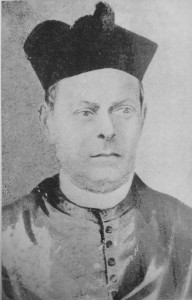

The highlights of Sillani’s administration were his friendly availability to listen to the “spiritual aches and pains” of his people and to spend prolonged periods in the confessional to reconcile the sinful. He spent most of his time preaching the ‘popular missions’ to the people by increasing the number of schools, prominent among them were St. Benedict’s College and the Good shepherd Convent at Kotahena, and in building the most beautiful churches. Moreover, he encouraged and supported the publication of ‘The Ceylon Catholic Messenger’ and ‘The Gnanarta Pradipaya’. Cingolani summarized Sillani’s work in a few but eloquent words. “From the start of his administration of this vicariate Mgr. Sillani visited all the churches, though small, shabby and without any comfort or dwelling, and he did this not for any publicity, but, as soon as he arrived to these churches, he called for eight days’ spiritual exercises preached in the morning and in the evening by his co-workers, while he made himself useful for any ministry, as he was the first to go to the confessional and the last to get out of it” Sillani’s era as Vicar Apostolic of Colombo had been called by some writers as the ‘Golden Era’ of the Lankan Church.
Mgr. Sillani died in Rome on the 27th of March 1879. His remains rest in the tomb of the Sylvestrine congregation in the Roman cemetery of Verano.
Abbot Giacomo Leo Cingolani.
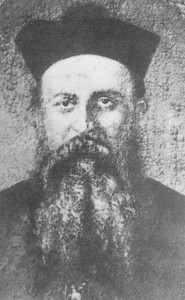

Cingolani is better-known for founding a monastery for the formation of native young men to the Monastic life. After his arrival at Colombo, Cingolani was first appointed at Pettah as a local missionary, and acted as a secretary to Bishop Bravi for eight years. During this time he founded the congregation at Kotte. Cingolani pursued his efforts to train some indigenous young men to the priesthood. In 1858, 4 Ceylonese young men accompanied Cingolani to go to Rome for their training to the Priesthood. Two of these returned to Sri Lanka as priests, Fr. Assaw and Fr. Vanderstrassen. On his return to Sri Lanka, in 1860, Cingolani was appointed in charge of the Bolawalana mission, and in September 1862 he went to the Pallansena mission. Here he opened up schools, set up sodalities and built anew or enlarged the churches at Toppu, Bambukuliva and Muttana. In September 1864 he went to Kandy and remained in charge of the Central Province (with Uva) for sixteen years. The history of these sixteen years of Cingolani’s efforts in Kandy is the history of the initial stages of the diocese of Kandy. In just three short years after the departure of Fr. Cingolani, Kandy was praiseworthy of being a new vicariate with its Bishop and this was due to the dreams and pains of Fr. Cingolani. Apart from his many evangelical endeavors, which saw him set up two new stations at Gatambe and Panwila, Cingolani raised the status of St. Anthony’s School by making two Christian Brothers in charge of that school in the beginning of 1869. Some historians even spoke of him of him for many years as the founder of St. Anthony’s College. Dr. Cingolani during the eight years he has labored in Kandy, who enriched Kandy with its future Cathedral and a Benedictine Monastery, has shown what a Catholic priest devoted to the cause of his Divine Master can do in fighting the battle of the Cross. On the 4th of February 1875, Abbot General Corneli erected the novitiate in Kandy Monastery and bestowed the title of Abbot to Cingolani. In September 1878 Abbot Cingolani was appointed Administrator Apostolic of Colombo Vicariate when Mgr. Sillani was forced to go to Italy for his ill health. Abbot Cingolani completed his office of Administrator Apostolic of the Colombo on the 30th of December 1879, when Mgr. Pagnani was promoted as Vicar Apostolic of Colombo. Cingolani left the island on April 1880 due to his ill-health. Abbot Cingolani died on the 10th of August 1899 at his home town of Loreto and was buried there. Abbot Cingolani was a hard working man and very competent of initiatives.
Mgr. Clement Pagnani (1834 -1911)
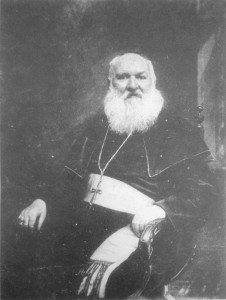

Mgr. Pagnani was a man of great prudence, with good health and a charismatic presence. He was gifted with a beautiful and powerful voice and he was portrayed with an imposing beard. The greatest legacy left by Mgr. Pagnani was a renovated local Church. Mgr. Pagnani died at Kandy on the 27th of June 1911 and was buried in St. Anthony’s Cathedral, Kandy. “Mgr. Pagnani will go down in history as one of the greatest missionaries of the East. His saintly life was an inspiration to us all”, Bishop Regno wrote about him in 1945.
Abbot Augustine Pancrazi
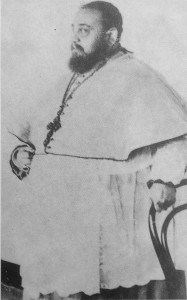

Abbot Pancrazi spent most of his life in the monastery at Kandy. Although Cingolani had built the monastery with brick and mortar, Pancrazi had a hard task to build a community of monks united in heart and soul. Pancrazi was remembered as a quiet man that presided over the Abbey of Kandy as superior from 1891 until his death. He successfully guided the monastery through several financial storms. Pancrazi held the position of prior over the religious community at St. Anthony’s monastery for a long 17 years, and he guided the destiny of the monastery for a further long period of 14 years as Abbot of St. Anthony’s Abbey. Although the greater part of his life was spent in the monastery, occasionally he was in charge of the missions in Kegalle or else in Utumankande or of Panwila or of Teldeniya or of Nawalapitiya. The apostolic delegate, Mgr. Zaleski said that “The Right Reverend Abbot Augustine Pancrazi was a much admired person; unfortunately he suffered of gruesome obesity”. Pancrazi was an excellent Abbot and Superior of the monastery, but his fatness caused him unable to carry out the duties as Bishop after the death of Mgr. Pagnani. Mgr. Zaleski objected to the nomination of Abbot Pancrazi as a candidate to lead the Bishopric of Kandy by then Abbot General, Hugo Policari. The man gifted to be a bishop of Kandy was only the native Fr. Bede Beekmeyer. The former Abbey of St. Anthony ay Kandy (now Kandy Cathedral) was the vision of Abbot Cingolani, but the bonding idea of the Sylvestrine monks in Sri Lanka was the heart and solicitous care of Abbot Pancrazi. Abbot Augustine Pancrazi died on the 22nd of May 1922.
Mgr. Bede Beekmeyer (first Sri Lankan to become bishop)
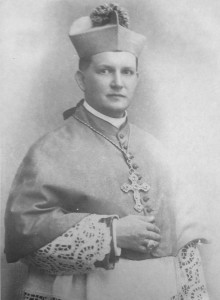

Bishop Regno wrote in 1945 that the Diocese of Kandy was greatly indebted to Mgr. Beekmeyer for his indefatigable efforts to establish and consolidate associations of Catholic Action throughout the whole diocese, and to hold Eucharistic rallies in almost every mission. Through these wonderful demonstrations of Catholic faith, Mgr. Beekmeyer stamped out of his diocese the inferiority complex under which poor Catholics had labored since time immemorial. St. Anthony’s College, Katugastota, St. Bede’s College at Badulla and the Convent at Gampola owe their start entirely to his magnificence. The Ceylon Daily News under the caption “Twenty three years a Bishop” wrote: “The triumphant justification of Dr. Beekmeyer’s appointment, a unique distinction for a Ceylonese, judged by all acceptable standards, lies in the remarkable record of work that stands to his credit during the twenty three years of his Episcopacy. For a just appreciation of his achievements, it must be remembered that the diocese of Kandy is poor and the parishes comprising it widely scattered, while its needs are none the less as many as those of a more affluent one and their satisfaction, therefore, a problem of much greater magnitude. In the circumstances it bespeaks the greatest courage and purposeful action on the part of Dr. Beekmeyer that he has left his charge as fully equipped to meet all its needs”. Bishop Beekmeyer died on the 22nd of May 1935. He was a loving father of each and every one of his flock and above all, the father of the poor and they lamented his demise the most.
Mgr. Bernard Regno (1886-1977) (the coolie Bishop)
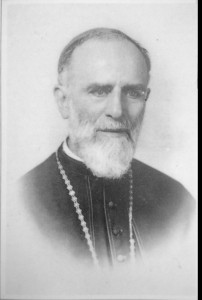

Bishop Regno during his whole life gave a new insight of the Church of the poor. While Theologians all over the World discussed the ‘option for the poor’, Regno made his choice from the beginning of his apostolic life. He was called ‘the coolie Bishop’ on account of his heroic commitment to the evangelization of the poor ‘coolies’, the tea estate labourers, who were the most exploited sector of Sri Lankan society. He was the ‘poverello’ of the twentieth century, who was raised by God to preach the need of practicing evangelical poverty. A priest wrote of Bishop Regno “He was a Bishop-Gentleman (sui generis) and a saint with deep, humanitarian principles and abiding love for all and sundry, very much like the Pope St. Pope John XXIII with his characteristic humour. He poossesed a blending of the particular virtues of St. Francis of Assisi, St. Francis of Sales, St. Theresa of Lisieux, St. Vincent de Paul, St. Alphonsus Liguori, Sts. Peter and Paul (the apostles) and made them unique and distinguished among the other saints. The Catholic Church and Sri Lanka became poorer and sadder without him”. Regno renounced the bishopric of Kandy in 1959 and died in Kandy on the 22nd f August 1977, after a long span of 71 years on the mission. He was buried in St. Anthony’s Cathedral, Kandy. D. Barsenbach concluded his story of the “Coolie Bishop” with this profound comment: “In Bishop Regno, God has given his religious order and the Diocese of Kandy a great gift, a great and exemplary priest and Bishop”
Abbot Anselm Weerasignhe (1890-1948)
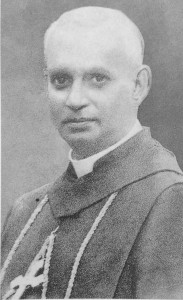

Ordained Priest on the 21st December 1918,
Master of Novices 1937-1939
Blessed Abbot on 6th November 1939
Died 7th January 1948
Mgr. Leo Nanayakkara. (1917-1982) (First Bishop of the Diocese of Badulla)
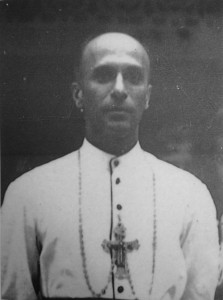

Bishop Leo Nanayakkara, an outgrowth of the second Vatican Council, was a man of determination, energetic, with a heart full of human sympathy. He was a versatile and able speaker, was simple in his ways, approachable to all and a strong upholder of human rights. His heart was towards the poor and destitute, just like his predecessor, Bishop Regno. His method of reaching out to the poor was different than of Bishop Regno. Bishop Regno ate, drank and slept with the poor coolies; Bishop Leo was not seen compassionately bending over the lowly and the poor but instead he chose to stand erect before them, bidding them to do the same: he summoned them to rise and walk. He established groups for the emancipation of the poor: He announced to the Lankan Society of a just God, who had always condemned the unjust structures and the oppression of the poor, the orphans and the widows. Anyone who felt suppressed or marginalized by social or religious power systems found in Bishop Leo a sympathetic listener, a friendly solace and a practical help. Some of Bishop Leo’s initiatives, which either began or were encouraged by him, have brought about a significant change within the Sri Lankan Church. Mgr. Leo Nayakkara was transferred to the new diocese of Badulla in February 1973 when the Sylvestrines gave up the administration of the Kandy Diocese. He died on the 28th of May 1982.
Mgr. Cletus Chandrasiri Perera OSB (Bishop of the Diocese of Ratnapura)
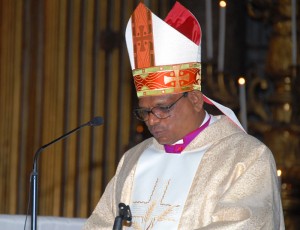

Having entered the Sylvestro Benedictine Congregation (St. Sylvester’s Monastery at Monte Fano in Kandy) in January of 1964 he was ordained on August 4, 1973 by Rt. Rev. Paul Perera, Bishop of Kandy. Soon after, he was appointed Chaplain to Hospitals and Prisons in Kandy and was assistant pastor at Fatima church, Padiwatta, Kundasale. In 1976 he was made the assistant pastor at St. Anthony’s church, Wahakotte in the diocese of Kandy.
Fr. Cletus also served as assistant pastor of Sacred Heart Church Rajagiriya, before becoming the parish priest and administrator at St. Anthony’s Shrine, Wahakotte in 1984. As the priest in charge of the Shrine of St. Anthony at Wahacotte, he proved his mettle as an able administrator as well as a caring shepherd while strictly adhering to the requirements of the Benedictine Congregation to lead a pious life as a monk.
His Lordship Bishop Vianney Fernando appointed him the Vicar General of the Kandy Diocese in 1992 and from 1995 to 1998 he served as Parish Priest of St. Anthony’s Cathedral, Kandy. After functioning for 8 years as Vicar General he reverted to his much-preferred role of Parish Priest. He was the Parish Priest of Katugastota when the Congregation unanimously elected him their Conventual Prior in April 2002. He held this position, and served as General Manager of the Catholic private schools in Kandy until his elevation to the episcopate.
On May 4, 2007, Pope Benedict XVI made the solemn announcement of appointing Fr. Cletus Chandrasiri Perera O.S.B., Conventual Prior of the Monastery of St. Sylvester in Kandy, Sri Lanka, as Bishop of Ratnapura. The appointment of Very Rev. Fr. Cletus Perera, the Conventual Prior of the Sylvestro Benedictine Congregation (OSB) as the 3rd Bishop of the Diocese of Ratnapura was received with much joy by the Catholics of Sri Lanka. He was consecrtd bishop in Rome on the 11th July the Feast Day of St. Benedict and was installed as Bishop of Ratnapura at a simple ceremony on the 28th of July 2007 by Rt. Rev. Dr. Vianney Fernando, Bishop of Kandy.
Bishop Cletus is the third bishop of Ratnapura – Archbishop Malcolm Ranjith was the first, followed by Rt. Rev. Dr. Harold Anthony, Rt. Rev. Dr. Ivan Tilak Jayasundera who was to succeed him resigned due to ill health and Rt. Rev. Dr. Cletus Perera OSB was chosen to fill the vacancy.
The following is an extraction from an article written by Mr. Victor Silva and published in the Sunday Observer on the 1st July 2007
Simplicity, Humility & Piety
Knowing very well his unassuming disposition, I am sure he will feel quite embarrassed at the publicity given to these qualities.
Nevertheless, I will be failing in my duty if I do not do so, for, his simplicity, concern for others, and his deep piety are an example to all. In this regard I wish to highlight the following: Though he has held high office in his priestly life, he never lost the common touch. He was always available to the people at any time of the day. He was humble enough to acknowledge his limitations and seek the guidance and advice of professionals when acting in areas beyond his capabilities.
His sense of obedience and respect towards his superiors and his humility have been exemplary. This great quality was observed by many as recently as the 25th of April 2007 by the manner he very respectfully knelt and kissed the ring of Rt. Rev. Dr. Harold Perera (Bishop of Galle and Apostolic Administrator of the Diocese of Ratnapura) when His Lordship arrived at the Blessed Sacrament Congregation Scholasticate, Ampitiya to confer the diaconate to three brothers preparing for priestly ordination.
What is most significant in his gesture is that by this day (25th April) it was very likely that he would have been officially informed about his appointment as Bishop and that it was from His Lordship Bishop Harold Perera he would take over the reins of the Ratnapura Diocese.
This simple man of God showed his utmost respect to a Bishop despite the fact that he too was soon to be elevated to the episcopate. This, I believe is a very good lesson to all of us on humility, respect and obedience.
His concern for others, especially for the poor and the down-trodden irrespective of their race or religion has been and still continues to be an example to many. No one who turned to him for solace, be it spiritual or material was turned away.
He always made them feel welcome, spoke to them warmly and did his best to console and assist them. In fact, it was this great quality that impressed many and endeared them to him. In this regard it is fitting for me to make public what was narrated to me recently by someone who has been very much touched by Fr. Cletus.
“I recall an experience I had when I was discerning my vocation to the priesthood. As a school boy, I used to travel by bus to return home after school. On a rainy day, in 1993 when I wanted to get into a bus from the Kandy (Clock Tower) bus stand, I saw a middle-aged blind man struggling to collect his spilt coins scattered all over the place as a result of the pressing commuters.
Then, there was this priest, with his big travelling bag. He kept his bag aside, collected all the coins, gave them to the blind man, and quietly went on his way. This sight made such a strong impact in my mind that it still reminds me of the spirituality of a priest, formed after that of Blessed Joseph Vaz, the beloved Apostle of Sri Lanka. Only later I came to know that this priest was Fr. Cletus”. (This young boy subsequently joined the OSB congregation and was ordained a priest in 2005. It is a happy coincidence that Fr. Cletus was the Prior at the time of his ordination).
It is quite well known that Very Rev. Fr. Cletus is a devout man of prayer. He catered very much for the spiritual upliftment of his flock. I have observed him seated at the Confessional for long hours awaiting the penitents who come to receive the Sacrament of Reconciliation.
It is now time for me to make public something I observed nearly 16 years ago, which left in me a lasting impression of this holy priest. On a Thursday in July 1991, around 3 pm I happened to pay a visit to St. Anthony’s Church, Wahacotte and I observed Fr. Cletus making the ‘Way of the Cross’. It is the usual practice among Catholics to make the Way of the Cross during the Season of Lent and there are also those who do this pious exercise every Friday (even outside the Season of Lent). But, here was Fr. Cletus making the Way of the Cross not during the Season of Lent and on a Thursday.
Subsequently I came to know that Fr. Cletus carries out this pious exercise daily to contemplate the passion and death of Jesus. No wonder then, he has chosen as his Episcopal Motto ‘PER CRUCEM AD LUCEM’ which means ‘Through the Cross to the Light’.
CONCLUSION: THEIR MEMORY IS STILL BLESSED
From: The Sylvestro-Benedictine Prelates and the Sri Lankan Church
By Fr. Bede Barcatta OSB
The moderator of my doctoral dissertation was an old German Benedictine monk, Dom Matthew Rottenhausler. As his eyesight was failing, he accepted to guide me in my work on condition that I would read to him my voluminous manuscript. I spent hours and hours in reading to him my script, while he sat on an armchair with his eyes closed. The frequent comment, which came from his lips while I read Bravi’s correspondence. was: ‘But he is a saint!’. Many years have passed since then; meanwhile l published Bravi’s correspondence and the history of the apostolate of the Sylvestrine Benedictine Monks in Sri Lanka. However, today I am more convinced than ever that the first Sylvestrine Prelate, Mgr. Bravi, had been a man of great virtue and his work of reconciliation between the local and European clergy had not been justly appraised. He as well as the other Sylvestrine Prelates left an indelible mark in the history of the Sri Lankan Church. In this present work I have attempted also to point out Mgr. Sillani’s endeavurs to nurture a deeper spirituality in the local Catholic communities with the “popular missions” and with erection of churches and other institutions which still are attesting to the labours of Sillani and of his missionaries. Mgr. Pagnani’s regime was dotted with many misadventures, but as Bishop of Kandy he became a legend to people of the whole island. Mgr Beekmeyer was the first native Bishop of Sri Lanka, and his people held him as their “favoured son”. The last two Sylvestrine Prelates, Regno and Nanayakkara, are still a legend in their own right for their endeavours on behalf of the poor of Sri Lanka.
However, the labours of these Pralates would have been fruitless without the co-operation and the efforts of many missionaries, native and European, Sylvestrines as well as members of the diocesan clergy. As a conclusion to these brief sketches I would like to mention just a few of the co-operators, specially those who bore the burden in the early period: others perhaps still alive would not appreciate seeing their names in print. The list of these co-operators is far from being complete.
The first Sylvestrine monk to follow Bravi to Sri Lanka was Emilian Miliani in 1847. The shrine in Burullapittiya in honour of the Sylvestrine Saint, Blessed Hugo, was the outcome of his apostolic zeal. He died in 1869 at age of49 in consequence of liver ailment. Abbot Leo Cingolani arrived in Sri Lanka as a priest in 1851. For nine years he was the secretary to young Mgr. Bravi and in charge of the Catholic congregation of Pettah. Later he worked with zeal among various Congregations of the Maritime Provinces; since 1864 he worked in the Central province. St Anthony’s Abbey, of which he became the first Abbot, saw the light of day only through his efforts. After 30 years of apostolate in Sri Lanka, he retired in Italy. He left his memoirs in a published book “Trent anni di Missione in Ceylon” and in two manuscripts. There is no doubt that the permanent establishment of a Benedictine monastery in Kandy is due mainly to his efforts. Other Sylvestrine monks during the early decades of the Sylvestrine administration were Augustine Manzoni, who died in 1867: he was 50 years old. Benedict Bondoni died in October 1867 at the young age of 33. He was in the mind of Mgr. Sillani: the best I had for his prudence and his zeal for the youth, which has lost a father a friend and a teacher. His parishioners of Moratuwa begged to have his remains interred in their cemetery and a tablet in St. Sebastian’s church at Moratuwa testifies the appreciation of his people to the zeal of this young Sylvestrine. In January 1868 Joseph Gentilucci at the age of 28 died of typhoid. Sillani commented that “our good, obedient, clever and very much loved Dom Joseph Gentilucci has been taken from us after only three days of his fatal, violent and obstinate disease“.
The first two native Sylvestrine monks. Hildebrand Vanderstraaten and Lanfranc Assaw cooperated in building up the ‘Benedictine Mission’. Vanderstraaten was a very promising young monk: After completing his studies in Rome he was appointed for a while Principal of St. Benedict’s College in Colombo; a few years later Principal of St. Anthony’s in Kandy and Novice Master. Mgr. Sillani presented him as candidate to Coadjutorship of Colombo. He died at age of 36 in 1879. Lanfranc Assaw served in many missions: while in Wahacotte he established the oblates of St. Sylvester. He was also superior of the Benedictine monastery in Kandy.
Other Silvestrines to be remembered are Bonfi Baldoni, who was in charge of the construction of St. Lucia’s Cathedral at the departure of Fr. Tabarrani; Sylvester Papili, the builder of Pamunugama church and the apostle of the devotion to the Most Precious Blood. He left such deep memories in that community that his old parishioners of Pamunugama, fifty years after his death at Nuwara Eliya, brought his ramains next to their church and bulit a monument in his honour. Philip Scocco, Maurus Longhi, Columban Righi, Idephonsus Moreau, the Tamil William Canjamanden, D. M. Craner, Joseph Giovani. Rynald Santangelo, Jerome Tozzi spent time in the Colombo mission and some laid their mortal remains in the country.
Five Spanish Benedictines from Western Australia joined the Vicariate of Colombo, namely Dom Benito Martin, the builder of St. Mary’s Cathedral in Galle, who died in 1876: Dom Peter Aragon, who died in 1862: Dom Salbador Ribaya, who retired in Spain only after the Sylvesterines left Colombo. Dom Venancio Grrido and Francis Salvado also laboured for some time in the Vicariate of Colombo. Bravi’s companion, Froilano Oruna, joined Colombo in 1863 and died in Colombo in 1863. Another Benedictine of the Subiaco Congregation, Ramiro Fomelli, worked in Colombo for several years until he joined confreres in the Bengal mission.
The Oratorian Matteo Gaetano has been a good supporter of Bravi as well as Sillani and he served both as Vicar General until his death in 1874. Among the oblates, who worked for years in Colombo, Fr. Dominic Pulicani was remembered with great affection by many people as well as by the missionaries.
An important contribution in building up the ‘Benedictine Mission’ of Colombo was given by the Sylvestrine Tertiaries. The first two to join in 1857 were C.J.B. Fernando and Johe Vistarini. Fernando, after his training at Propaganda College in Rome, was the first Lankan man to be ordained priest. He worked with full satisfaction of his superiors in many missions. In 1880 he was appointed by Pagnani Vicar General: he followed Pagnani to Kandy, where he continued to act as his Vicar General. In the later years he joined the Sylvestrine Congregation as a professed monk and died in 1902 at 77 years of age. John Vistarini opted to be transferred from the vicariate of Jaffna to Colombo for his desire to become a Sylvestrine Tertiary. Most of his life he was in charge of the congregation of St. Mary’s Grand Street, Negombo. He died in 1905. Other well known missionaries were the Stanislaus Tabarrani and Peter Lari. Fr. Tabarrani, although already a member of a Religious order, considered himself a Sylvestrine Tertiary and wore the Sylvestrine habit and recited the Monastic office. He was designer and builder of St. Lucia’s Cathedral in Colombo and of many other churches throughout the Vicariate. He left the island in 1880 on account of his health and died a few months later in Rome. Fr. Peter Ilari instead spent most of his time at Mutuwal, and St James’s Church and others were the outcome efforts. He was troubled by liver ailment and went back several times to his native Italy. He left Si Lanka for good in 1886. Even after the departure of the Sylvestrines from Colombo he remained a dedicated Tertiary all his life. Other Tertiaries to be remembered are Fr. Louis Piccinelli who left his imprint in Kalutara with the estabishment of two lay-communities: J.B. Balangero, C. Viani, J.B. Callet, T. Tanganelli, J. Palla, J.A. Maver, J.A. Maver, J.A.B. Bergeretti and J. Piantino. A special mention is due to C. Cardano, who remained in Colombo after 1883, but he always considered himself a Sylvestrine Tertiary and when he died in 1925 he had the initials O.S.B: chiseled on his tomb-stone. Two young Tertiaries died in 1882: Johe Baptist Buzzio at the age of 36 years and Bartholomew Rovere was only 30 years old and had arrived just a year earlier.
Also some native clergy joined sylvestrine Tertiaries. Francis Sales Vadoolison has been ordained for Jaffna by Mgr. Bettacchini, but in 1865 he joined the Colombo Vicariate as a Sylvestrine Tertiary. Other native Tertiaries were J. Massillamani, J.B. Ratnayake, P.J. Direksze, D.G. Fernando, Pius Fernando, the other missionaries, who worked in the Colombo vicariate under the Sylvesterine Prelates, should be mentioned, but the list would be too long.
The clergy of the new Vicariate of Kandy was nearly all Lankan sylvestrine monks. The one who contributed mostly to this happy situation has been Abbot Augustine Pancrazi. He had arrived in the island in 1877. After his ordination he spent his whole life in the monastery at Kandy as Novice master, superior and finally Abbot. He died in 1922. The Lankan monks can also boast that one of their number, Anselm Weeresinghe, was the first Abbot of the same community. The work of many other Sylvestrine monks who gave their life for the spiritual and educational development of the country, is known to God alone. The same work is still continued by the local Lankan monks.
To the past as well as to the present workers in the Vineyard of the Lord we offer this small sign of gratitude and may the immortal spirit of St. Benedict guide the Lankan monks for many generations to come.
